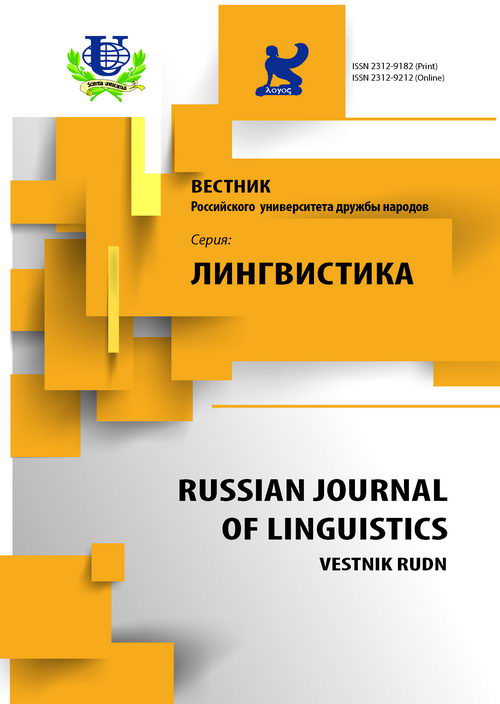Representation of Emotivity in Emotive and Pragmatic Attitudes of Participants in Romantic communication
- Authors: Rents TG1
-
Affiliations:
- Volgograd State University
- Issue: No 1 (2015)
- Pages: 178-189
- Section: Articles
- URL: https://journals.rudn.ru/linguistics/article/view/9412
Cite item
Full Text
Abstract
The article deals with the problem of functioning of emotivity category in romantic communication. The author analyses illocutionary acts produced by the addresser and reveals verbal and non-verbal means that represent emotivity in them. Considerable attention is given to the explicit and implicit ways of expression of the category under consideration. It is proved that not only verbal and non-verbal means but also communicative situations can be emotive and are of emotiogenic character in romantic communication. The research material demonstrates that participants’ emotions are realized as complexes and the explicit or implicit appeal to these emotions appears as a motivating factor affecting individuals.
About the authors
T G Rents
Volgograd State University
Email: trents@yandex.ru
Linguistics Chair Volzhsky Institute of Humanities
References
- Вежбицкая А. Язык. Культура. Познание. М.: Русские словари, 1996.
- Винокур Т.Г. Говорящий и слушающий / Вступ. cт. Л.П. Крысина. Изд. 3-е. М.: Издательство ЛКИ, 2007.
- Гак В.Г. Синтаксис эмоций и оценок // Функциональная семантика: оценка, экспрессивность, модальность. In Memoriam Е.М. Вольф. М., 1996. С. 20-31.
- Ионова С.В. Эмотивность текстов вторичного воспроизведения // Язык и эмоции: номинативные и коммуникативные аспекты: сб. науч. тр. к юбилею В.И. Шаховского / отв. ред. С.В. Ионова. Волгоград: Волгоградское научное изд-во. 2009. С. 234-242.
- Культура русской речи: энциклопедический словарь-справочник / под ред. Л.Ю. Иванова, А.П. Сковородникова, Е.Н. Ширяева и др. М.: Флинта: Наука, 2003.
- Мягкова Е.Ю. Эмоционально-чувственный компонент значения слова: вопросы теории: автореф. дис.. д-ра филол. наук. М.: РАН, Ин-т языкознания, 2000.
- Ренц Т.Г. Романтическое общение в коммуникативно-семиотическом аспекте: монография. Волгоград: Изд-во ВолГУ, 2011.
- Сидоров Е.В. Онтология дискурса. 2-е изд. М.: Книжный дом «ЛИБРОКОМ», 2009.
- Толковый словарь русского языка / С.И. Ожегов, Н.Ю. Шведова; Российская академия наук. Ин-т русского языка: Российский фонд культуры. М.: АЗь, 1993.
- Толковый словарь русского языка (ТСРЯУ) / Д.Н. Ушакова. URL: http://ushakovdictionary.ru (дата обращения: 20.10.2014).
- Туранский И.И. Средства интенсификации высказывания в английском языке. Куйбышев: Куйбышевский гос. пед. ин-т, 1987.
- Филимонова О.Е. Категория эмотивности в английском тексте (когнитивный и коммуникативный аспекты): автореф. дис.. д-ра филол. наук. СПб.: Российский гос. пед. ун-т им. А.И. Герцена, 2001.
- Шаховский В.И. Лингвистическая теория эмоций: монография. М.: Гнозис, 2008.
- Dijk van T.A. Politics, Ideology and Discourse // Encyclopedia of Language and Linguistics: Section Language and Politics. Elsevier: 2 Rev Ed, 2005.
- Ekman P., Friesen W.V. Unmasking the face: a guide to recognizing emotions from facial clues. Malor Books, 2003.

















